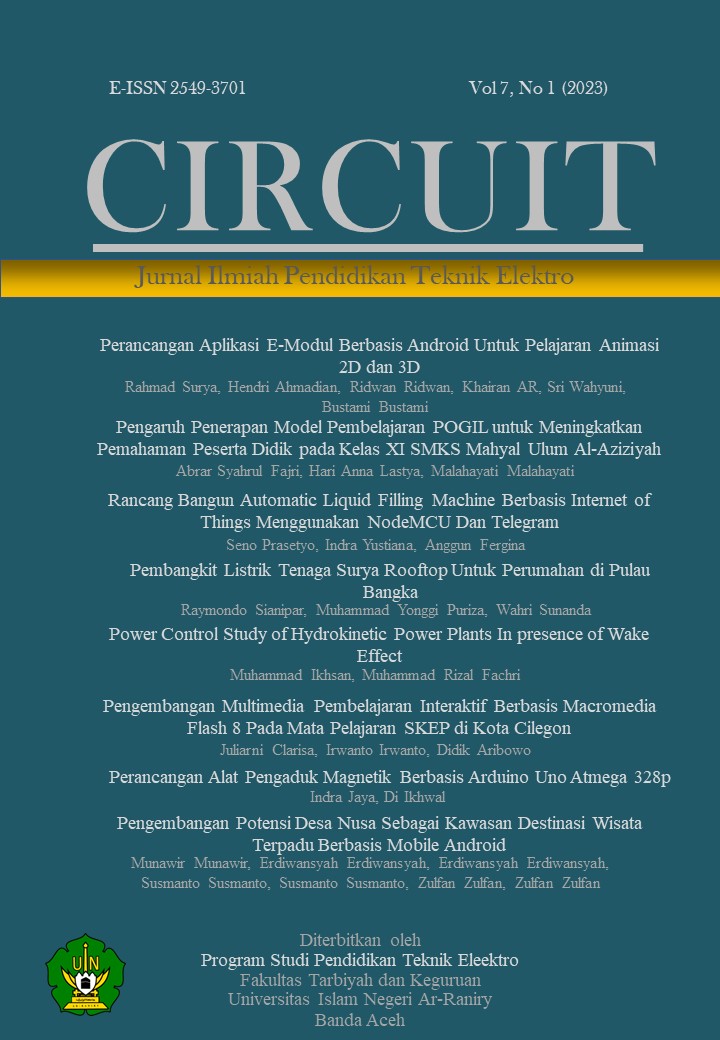Perancangan Rangkaian Forward-Reverse pada Motor 3 Fasa
DOI:
https://doi.org/10.22373/crc.v7i1.16035Keywords:
Electric, forward-reverse, 3-phase motorAbstract
Electricity is a modern-day invention that has become the driving force behind the majority of industries. The 3-phase motor system includes it. The 3-phase motor system is an electrical device-owned system that converts electrical energy into mechanical energy. The purpose of this research is to complete the development of a forward-reverse control system using a three-phase motor and to determine the feasibility test results for a three-phase motor system trainer with a forward-reverse circuit. Data collection techniques were used in conjunction with data analysis of experimental results using qualitative descriptive techniques. This method is used by describing the entire series. This technique is carried out by describing the entire series of research flows beginning with the analysis of tool and material needs, design of control systems, realization of control systems, testing of control systems, and results of testing of control systems. The study's findings indicate that creating a system using a 3-phase induction motor, which is commonly used in various industries for production purposes, can increase the practical ease of use in distributing AC power to the system. Furthermore, the implementation of this 3-phase motor can control electricity effectively. Because its components are highly efficient, a three-phase motor is used. Using a PLN voltage source. Stripping pliers and cable cutters, a digital multimeter, and one set of screwdrivers were used. There are several buttons (buttons), and when the forward button is pressed, the voltage is distributed to the magnetic
contractor forward, and the induction motor rotates forward. When the reverse button is pressed, the
magnetic contractor reverses; if it is already in operation, the motor moves in the opposite direction.
Downloads
Published
Issue
Section
License
Authors who publish in CIRCUIT: Jurnal Ilmiah Pendidikan Teknik Elektro agree to the following terms:
- Authors retain copyright and grant the journal right of first publication with the work licensed under a Creative Commons Attribution-ShareAlike 4.0 International License (CC BY-SA 4.0) that allows others to share and adapt the work with an acknowledgement of the authorship and initial publication in this journal
- Authors are able to enter into separate, additional contractual arrangements for the non-exclusive distribution of the journal's published version of the work (e.g., post it to an institutional repository or publish it in a book), with an acknowledgment of its initial publication in this journal.
- Authors are permitted and encouraged to post their work online (e.g., in institutional repositories or on their website) prior to and during the submission process, as it can lead to productive exchanges, as well as earlier and greater citation of published work. (See The Effect of Open Acces)

